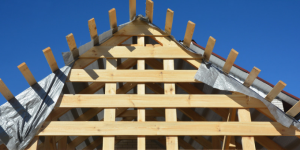If you are wondering what might be the average cost for damp proofing your house, we will provide you with the answer to this. In this article, we will tell you everything about damp proofing that you should know.
Why do you need to damp proof your house?

The damps in your home or any building can cause potential harm to the structure. Damp Proofing is an affordable and easy way to prevent such harmful effects at the initial stage. Damp Proofing avoids any harm to the difference and hence prevents any additional expenses on structural damage in the future.
In this article, we have provided the latest prices if you are thinking of getting an hour house damp proofed.
What are the types of damps?

There are three kinds of damps that can pose damage to your home.
1. Condensation
This is the most common type of damp usually found in the house bathrooms and kitchens. It is caused due to moisture. Generally, when water falls on any surface, it sinks into the nearby walls or ceilings, making them wet. This causes it to dampen. It results in the molding of walls or ceilings.
2. Rising Damps
This kind of dampness is not caused by any external source of water. Rather it is caused due to moisture from the earth that sinks into the walls or foundations of the buildings, causing potential damage. The treatment of rising damps is quite expensive as well as complex.
3. Penetrating damps
The reason behind this type of dampness is moisture from an external source. Sometimes, the moisture can seep from holes, making the floors and ceiling wet. This leads to the molding of the structure and causes great damage to the building.
What are the causes of damps?

To treat the damp, we must first know the reason behind the damp. Here we have listed down some of the most common reasons behind the formation of damps along with their preventive measures.
1. Moisture from internal sources
It is the most common reason for the formation of damps. Sometimes, water can seep into the walls of bathrooms or kitchens due to water spilled during cooking, showering, etc. To avoid this, proper ventilation should be done, for instance, an extractor fan or a dehumidifier. Damp-proof paints can also be applied in order to avoid this.
2. Seepage through holes
Sometimes, water from external sources can also affect the building through holes and cracks. In this, water seeps into the floor or walls through any cracks or holes. This can be prevented by getting these cracks and holes filled or repaired. This will prevent further damage to the house.
3. Moisture from outside
Suppose if you share a wall with another house that has a damp, it will affect your house wall as well. The moisture can be unintentionally spread into your house as well. To prevent this, the original source of moisture needs to be treated to prevent further spread of moisture.
4. Internal Bridging
Sometimes, debris can create a bridge-like structure within the cavities of walls. This results in the transfer of moisture. It can be prevented by removing away the debris.
Apart from the above-mentioned measures, the damp-proofing layer is another preventive measure. This is one of the most effective ways to prevent damps in your house.
This additional layer prevents the transfer of moisture at the initial stage and hence prevents the formation of any kinds of dams from the very beginning. However, it needs to be treated at regular intervals as it gets damaged with time. Several water-proof plasters, paints, and gels are available to prevent damps.
What is the cost of damp proofing?
We have provided the average costs of the damp proofing measures.
- The damp proofing provider may provide the damp proofing service at a cost per meter. It ranges from £50- £75. Usually, the average price is around £60.
- Damp Proofing chimney cost varies depending on the cause of dampness like gaps, blockages, open chimney pots, etc. The average cost generally ranges from £75 per roll. Additional expenses include labor costs along with scaffolding charges. To completely remove the damp, the chimney is to be damp proofed completely.
- Damp Proofing external walls cost around £1500 on average. This is used to prevent the walls and ceilings from penetrating damps via cracks or holes.
- Damp Proofing a cellar and basement are required to be done as they are affected as well. It costs around £45 per meter damage.
- In chemical damp proofing, certain chemicals are used to prevent damps. It costs around £1,875 on average.
- Injection Damp Proofing is an effective measure to prevent moisture from seeping into the foundations of your house through the earth. It costs around £3500 on average.
On what factors does the cost of damp proofing depend?
Certain factors affect the total cost of getting your house damp-proofed. These factors have been listed below.
- The cost of damp proofing varies according to the type of damp. For instance, the cost of treating rising damps is costlier than the treatment of other damps. Moreover, different damp proofing course is required for different damp.
- Severeness of damp is another most important factor that decides the price of damp proofing. The greater the damage caused, the greater is the price to get it treated.
- The price of damp proofing greatly depends on the area that is damaged. If the damaged area is more, you will need to pay higher charges for damp proofing. Various damp proofing service providers charge the damp proofing per meter damage.
- Additional charges are required even after damp proofing to maintain your house any damps in the future. These can include the purchase of a dehumidifier or getting the surface plastered with an additional coat.
Conclusion
We hope that you find this article useful in answering all your questions regarding damp proofing your home.







